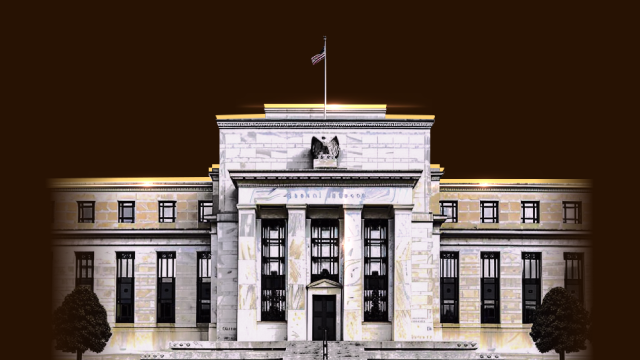IGLD250516C25000
- 0.00
- 0.000.00%
FT Vest Gold Strategy Target Income ETF® Newsroom
It is estimated that the USA will add 135,000 non-farm jobs in April, with an unemployment rate of 4.2%.
The median increase in non-farm employment is projected to be 135,000 in April 2025. If the actual growth is 135,000, it will indicate a decrease compared to last month and will also be lower than the 12-month average of 156,800. In March 2025, non-farm employment increased by 228,000, exceeding the estimated median of 130,000. In the past 12 months, non-farm employment surpassed the estimated median in 5 months and fell below it in 7 months. Over the past 5 years (60 months), non-farm employment exceeded the estimated median 57% of the time.
Key employment data is about to be released. Is the USA's economic outlook hanging by a thread?
The USA Department of Labor will release the April non-farm employment report, and the market is highly focused on this data, attempting to determine whether the USA economy is temporarily affected by tariff policies or is heading towards a more serious long-term decline.
In April, the USA's ISM manufacturing PMI experienced the largest contraction in five months, with the output index reaching the lowest level since May 2020.
Due to a decrease in Orders and the impact of tariffs, the USA's ISM Manufacturing PMI Index for April is 48.7, with an expectation of 47.9 and a previous value of 49. In an uncertain economic environment, both demand and output are declining, and employment is continuously contracting. The rise in costs due to tariffs has accelerated price increases, leading to a backlog of new Orders, slower supply deliveries, and increased inventory.
Is a rate cut imminent? The U.S. Treasury Secretary stated that the market has sent a signal to the Federal Reserve.
US Treasury Secretary Yellen stated in an interview with Fox Business Channel that the US debt market is sending clear signals indicating that the Federal Reserve should consider lowering interest rates.
U.S. stocks fluctuate | Spot Gold falls more than 1.8% and the Gold Sector collectively declines.
Gold Futures fell more than 1.8%, currently reported at 3227.3 USD.
The inflation Indicator most valued by the Federal Reserve continued to cool in March, but the "Trump impact" has arrived.
Data released on Wednesday indicated that the core PCE price Index in the USA experienced a slight month-on-month decline in March, the first decline since 2020; however, with a series of tariffs coming into effect, the market generally expects inflation in the USA to rise in the coming months; this will also put the Federal Reserve in a dilemma.
USA's inflation unexpectedly "stalled" in March, and the economic 'breathing space' may not last.
On the eve of the official implementation of tariffs, mixed data has emerged from the USA economy.
"The rush to import has caused the USA economy to shrink for the first time since 2022: the initial value of Q1 real GDP annualized was -0.3%, and core PCE at 3.5% is the highest in a year.
Affected by the surge in imports before tariffs and weak Consumer spending, the USA economy declined by 0.3% in the first quarter, with imports hitting the largest increase in five years, net exports dragging down GDP by nearly 5 percentage points, government spending experiencing negative growth for the first time since 2022, and business equipment spending being almost the only highlight.
Base Metal Prices Fall on Stronger Dollar, Gloomy Economic Outlook -- Market Talk
Weak U.S. Data Could Benefit Dollar If It De-Escalates Trade Conflict -- Market Talk
The non-farm payrolls are coming in strong! If cracks begin to show in the USA labor market, the likelihood of the Federal Reserve lowering interest rates in June is expected to increase significantly.
The shadow of tariffs looms over the USA economy, with top Wall Street investment institution Apollo Global Management warning that Friday's non-farm report may highlight signs of weakness in the labor market.
After the record trade deficit in March for Commodities, Wall Street has determined that GDP in the USA will shrink in the first quarter.
The rush by companies to import before tariffs caused the USA's trade deficit to soar to a historic high in March, which is expected to significantly drag down first-quarter economic growth. Morgan Stanley has drastically lowered its first-quarter GDP forecast for the USA from zero growth to a year-on-year decline of 1.4%, Goldman Sachs reduced its forecast from -0.2% to -0.8%, and JPMorgan adjusted its estimate from zero to -1.75%.
Under the threat of tariffs, the USA's commodity trade deficit hits a historical record! The first quarter GDP is likely to face a severe setback.
Due to companies importing Commodities in large quantities to avoid tariff costs, the USA's trade deficit in Commodities expanded to a record 162 billion dollars in March.
Trump has criticized Powell again, this time without naming him.
A week after claiming he had no intention of firing Powell, Trump again publicly criticized the Federal Reserve, stating, "We have a Federal Reserve that is not performing well," and believes he understands interest rates "better than he does."
March Job Openings Drop as Markets Await Nonfarm Payrolls Data
Tariffs have sparked widespread public dissatisfaction, forcing Trump to step out of his "comfort zone" and face voters directly.
① As various opinion polls show a rapid decline in Trump's approval ratings, the president of the USA has also ended the behavior pattern of the past three months; ② According to the schedule, he will travel to Michigan for a rally on Tuesday and deliver two graduation speeches in May.
Consumer Confidence Further Wanes as Expectations Slump to 13-Year Low
US Consumer Expectations Falls To 13-Year Lows As Recession Fears, Inflation Worries Surge
Job Openings Fall More Than Expected in March, Hover Near Four-year Low
In March, JOLTS job openings in the USA hit a six-month low, significantly below expectations.
In March, the USA had 7.192 million JOLTS job openings, below the expected 7.5 million and lower than the predictions of all economists surveyed. However, the number of layoffs decreased, hiring activity remained stable, and more employees voluntarily resigned, which somewhat alleviated the weakness in job vacancy data. After the data was released, US Treasury yields briefly fell. The "New Federal Reserve News Agency" stated that the situation of slow hiring and slow layoffs in the USA continued into March.



